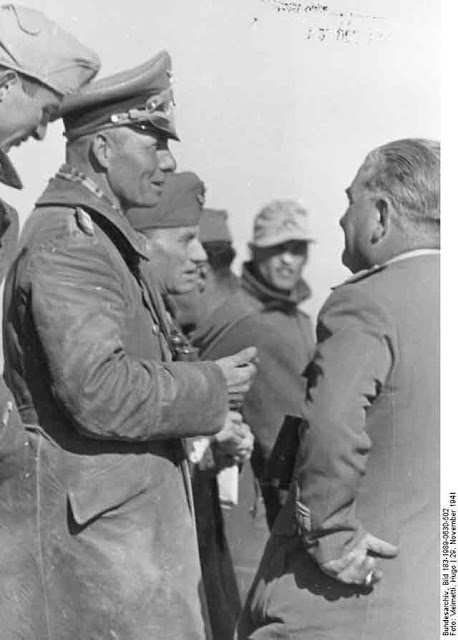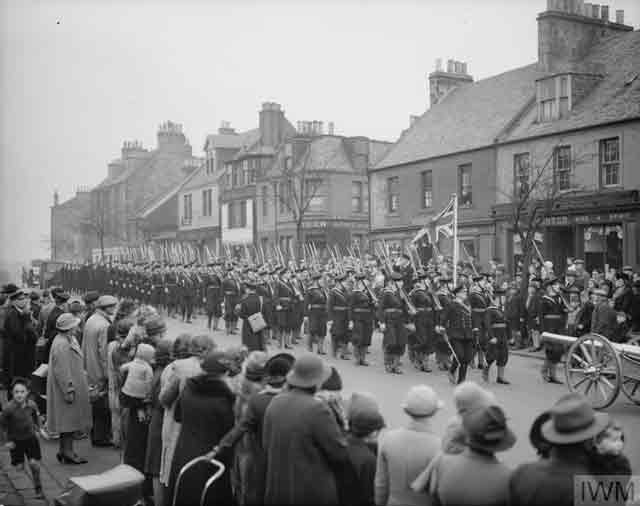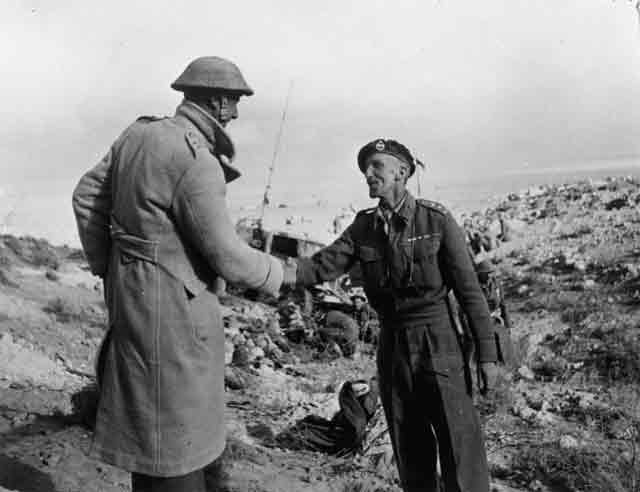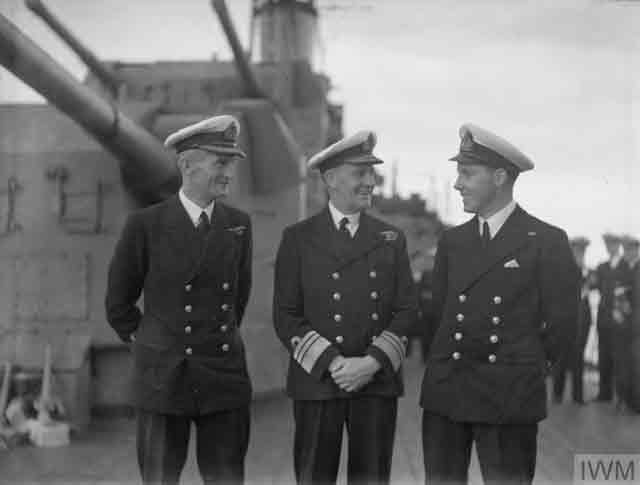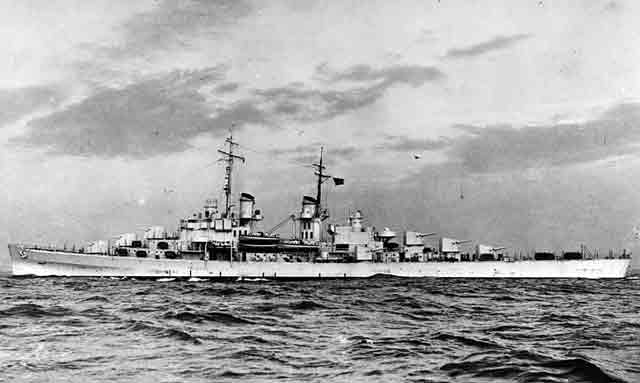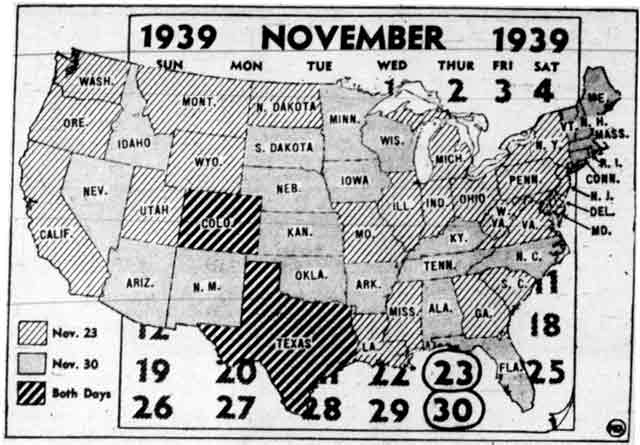Monday 1 December 1941
 |
| A Wehrmacht soldier surrender at Solnechnogorsk, northwest of Moscow, on 1 December 1941 (Samaryi Guraryi). |
 |
| Soviet troops marching on Gorky Street, Moscow, Russia, 1 December 1941. Credit: RIAN, Oleg Ignatovich. |
 |
| General Anders (right) and General Sikorski (second from left) at a conference in Moscow on 1 December 1941. They are negotiating a joint declaration of friendship between the Polish government in exile and the Soviet Union. This is a relationship that goes through many severe twists and turns throughout World War II and thereafter. Visible in the background are (from left to right) M. Kot, Polish Ambassador in Russia, M. Vyshinsky, Deputy People's Commissar for Foreign Affairs and M. Kalinin, the chairman of the Presidium of the Supreme Soviet (Rickard, J (8 April 2008), General Anders and General Sikorski in Moscow, 1 December 1941). |
 |
| "A Matilda tank crew overhauling their vehicle in preparation for the next phase of battle near Tobruk, 1 December 1941." © IWM (E 6864). |
 |
| Royal Navy destroyer HMS Harvester (left) closes in on USS Excalibur, a freighter, west of Gibraltar, on 1 December 1941. The captain of Harvester wants to check the freighter's papers, which are in order. This photo was taken from destroyer HMS Blackney (© IWM (A 6922)). |
Our negotiations with the United States regarding the execution of our national policy, adopted 5 November, have finally failed. Japan will open hostilities against the United States, Great Britain, and the Netherlands.While Hirohito has broken established rules of Imperial protocol at previous meetings to question the wisdom of war, he does not do so at this conference. His complete silence is an assent to the outbreak of war. It is decided that there will be no declaration of war, only an ambiguous note given to the United States shortly before hostilities begin breaking off relations. The date set for the attack is 8 December 1941, Japanese Standard Time, which would be 7 December 1941 in the United States.
 |
| Life magazine, 1 December 1941. |
November 1941
November 1, 1941: Finns Attack Toward Murmansk Railway
November 2, 1941: Manstein Isolates Sevastopol
November 3, 1941: Japan Prepares to Attack
November 4, 1941: German Advances in the South
November 5, 1941: Last Peace Effort By Japan
November 6, 1941: Stalin Casts Blame in an Unexpected Direction
November 7, 1941: Stalin's Big Parade
November 8, 1941: Germans Take Tikhvin
November 9, 1941: Duisburg Convoy Destruction
November 10, 1941: Manstein Attacks Sevastopol
November 11, 1941: Finland's Double Game Erupts
November 12, 1941: T-34 Tanks Take Charge
November 13, 1941: German Orsha Conference
November 14, 1941: German Supply Network Breaking Down
November 15, 1941: Operation Typhoon Resumes
November 16, 1941: Manstein Captures Kerch
November 17, 1941: Finland Halts Operations
November 18, 1941: British Operation Crusader
November 19, 1941: Sydney vs. Kormoran Duel
November 20, 1941: The US Rejects Final Japanese Demand
November 21, 1941: Germans Take Rostov
November 22, 1941: Kleist in Trouble at Rostov
November 23, 1941: Germans Take Klin, Huge Battle in North Africa
November 24, 1941: Rommel Counterattacks
November 25, 1941: HMS Barham Sunk
November 26, 1941: Japanese Fleet Sails
November 27, 1941: British Relieve Tobruk
November 28, 1941: Rostov Evacuated, German Closest Approach to Moscow
November 29, 1941: Hitler Furious About Retreat
November 30, 1941: Japan Sets the Date for its Attack
December 1941
December 1, 1941: Hitler Fires von Rundstedt
December 2, 1941: Climb Mount Niitaka
December 3, 1941: Hints of Trouble in the Pacific
December 4, 1941: Soviets Plan Counteroffensive
December 5, 1941: Soviets Counterattack at Kalinin
December 6, 1941: Soviet Counterattack at Moscow Broadens
December 7, 1941: Japan Attacks Pearl Harbor
December 8, 1941: US Enters World War II
December 9, 1941: German Retreat At Moscow
December 10, 1941: HMS Prince of Wales and Repulse Sunk
December 11, 1941: Hitler Declares War on US
December 12, 1941: Japanese in Burma
December 13, 1941: Battle of Cape Bon
December 14, 1941: Hitler Forbids Withdrawals
December 15, 1941: The Liepaja Massacre
December 16, 1941: Japan Invades Borneo
December 17, 1941: US Military Shakeup
December 18, 1941: Hitler Lays Down the Law
December 19, 1941: Brauchitsch Goes Home
December 20, 1941: Flying Tigers in Action
December 21, 1941: The Bogdanovka Massacre
December 22, 1941: Major Japanese Landings North of Manila
December 23, 1941: Wake Island Falls to Japan
December 24, 1941: Atrocities in Hong Kong
December 25, 1941: Japan Takes Hong Kong
December 26, 1941: Soviets Land in the Crimea
December 27, 1941: Commandos Raid Norway
December 28, 1941: Operation Anthropoid Begins
December 29, 1941: Soviet Landings at Feodosia
December 30, 1941: Race for Bataan
December 31, 1941: Nimitz in Charge
2020






